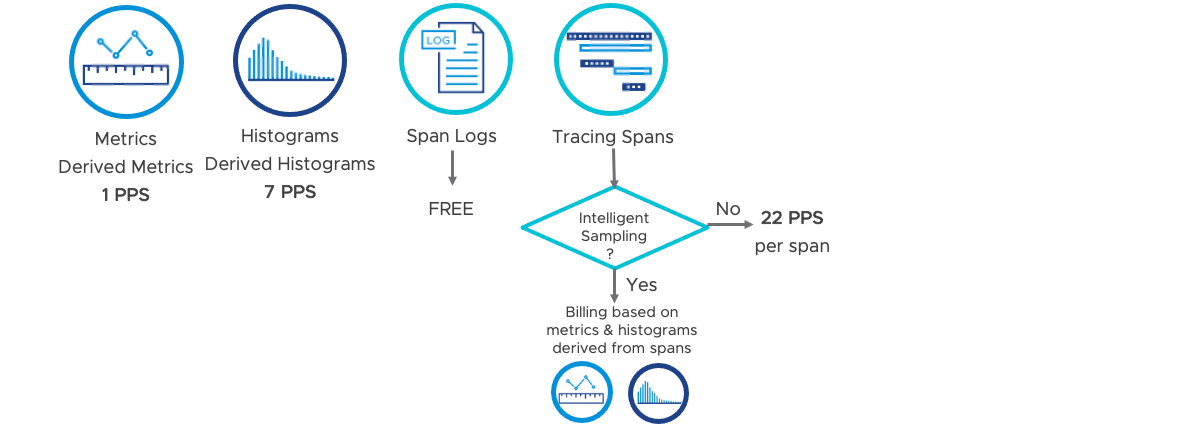Summary of pricing information.
VMware Aria Operations for Applications (formerly known as Tanzu Observability by Wavefront) pricing depends on the contract that your company has with VMware, on the types on data you’re ingesting, and on some other factors. This page gives an overview of pricing for the different types of data you can send to Operations for Applications.
Note: Some customers have special rates, for example, because they’re helping us to test a new feature. The information on this page covers the most common case.
Pricing Structure
At the core of the model is the idea of consumption-based pricing. What you pay is based on data throughput, primarily:
- Data ingestion. When the Operations for Applications service ingests data, the data is consumed and count toward your allocation.
- Data scanning. When you run a query, either as part of an alert or when you look at a dashboard, the backend has to scan the data. Scanning counts toward your allocation.
The model has this basic pricing structure:
- Each ingested or scanned metric or derived metric counts as 1 PPS.
- Each ingested or scanned histogram or derived histogram counts as 7 PPS.
For spans, the pricing structure is as follows:
- If intelligent sampling is turned on, the trace data is counted as derived metrics (1 PPS) or derived histograms (7 PPS).
- If you request our Technical Support team to turn off the intelligent sampling on your service instance, or if you specify sampling policies to specifically include certain traces, each tracing span counts as 22 PPS.
- Span logs are free.
